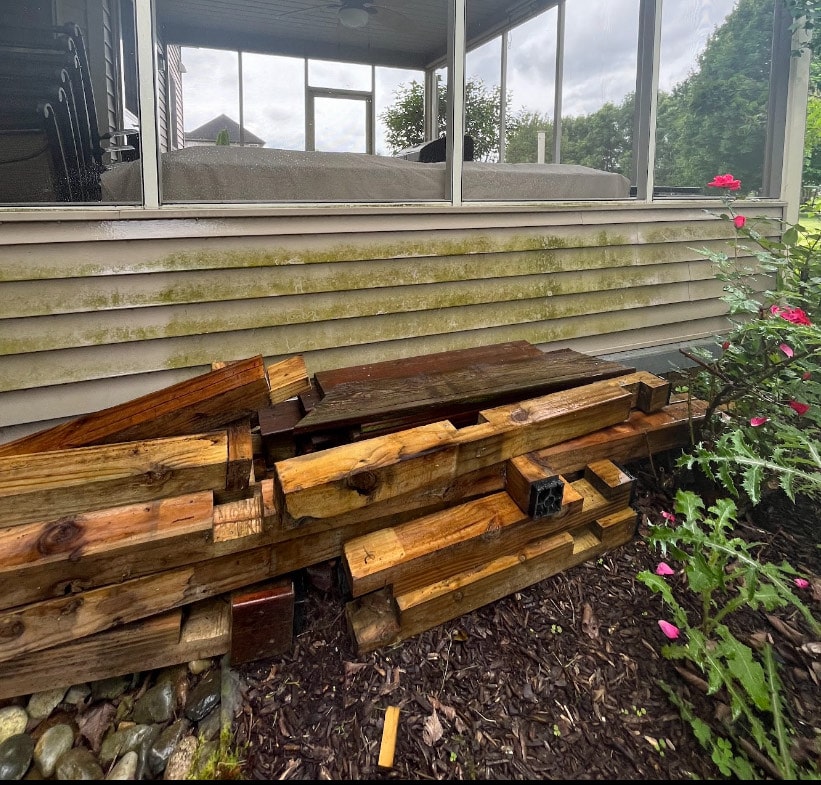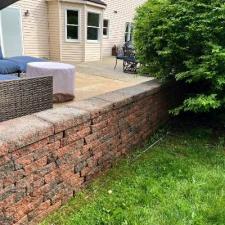Common Mistakes to Avoid When Pressure Washing in 2024

Pressure washing your home can be a fantastic way to keep it looking fresh and clean, but it's not as simple as just pointing and spraying. There are some common mistakes that homeowners often make, which can lead to damage and unnecessary costs. In this article, we'll explore some key pitfalls to avoid when pressure washing your home, ensuring you get the best results without any mishaps. Here's what we'll over:
- Overlooking the Effect on Exterior Paint and Misjudging Surface Durability
- Neglecting Hard to Reach Areas
- Overlooking the Impact on Wood Grain
- Failing to Identify and Treat Mildew or Mold First
With these tips and insights, you'll be well-prepared to tackle pressure washing your home safely and effectively, avoiding common mistakes that could lead to costly repairs or unexpected issues. Let's dive into each of these topics in more detail.
Overlooking the Effect on Exterior Paint and Exterior Surfaces
One of the easiest mistakes to make when pressure washing is assuming all surfaces can handle the same amount of pressure. It might seem like a one-size-fits-all tool, but that's definitely not the case. Different surfaces around your home vary in durability, and knowing the difference is crucial to avoid costly damage.
For example, imagine going outside after a good washing session, only to find patches where the paint has been blasted away or areas that look lighter than the rest. think about stucco versus brick. Stucco is pretty delicate, and using too much pressure can chip away at it, leaving unsightly marks or even holes. On the other hand, brick can usually handle a bit more force, but you still need to be cautious. Too much pressure can erode the mortar between the bricks, which might not be noticeable right away but can lead to structural issues down the road.
Vinyl siding is another story. While it's fairly sturdy, it can still be dented or cracked if you get too aggressive. Plus, if water gets behind the siding, it can lead to mold and rot, which is a whole other headache you don't want to deal with.
The key is to use a lower pressure setting and a wider nozzle when working on painted or delicate surfaces . Take your time and don't linger too long in one spot. If you're unsure, consider starting with a gentle cleaning solution and a soft brush before reaching for the pressure washer. This way, you can freshen your home without risking damage.
Neglecting Hard to Reach Areas
It's easy to focus on the big, visible parts of your home when you're pressure washing, but neglecting the hidden or hard-to-reach areas can lead to long-term problems. These spots might not seem like a big deal, but they can accumulate dirt, grime, and even mold, which can spread and cause damage over time.
Take under the eaves, for example. These areas often collect dirt, spider webs, and other debris. If left uncleaned, they can become a breeding ground for mold and mildew, which not only looks bad but can also lead to more serious issues, like wood rot. The same goes for behind downspouts and gutters—places that are easy to overlook but can accumulate a lot of grime.
Don't forget about the nooks and crannies around window frames and doors, either. These areas can trap moisture if not properly cleaned, which can lead to peeling paint and even structural damage if water starts to seep in.
Overlooking the Impact on Wood Grain
When pressure washing wooden surfaces like decks, fences, or outdoor furniture, it's crucial to pay attention to the wood grain. Wood, being a natural material, can react unpredictably to high-pressure water, and one common issue is raising the wood grain. This happens when the powerful stream of water lifts the softer parts of the wood, leaving a rough texture that can be uncomfortable to walk on and less attractive to look at.
It can make your deck or other wooden surfaces feel splintery and rough, which isn't ideal for bare feet or even pets. Second, it can lead to quicker weathering and degradation of the wood. When the grain is raised, the surface area exposed to the elements increases, making it more susceptible to moisture absorption, which can lead to cracking, warping, or rot over time.
To avoid raising the wood grain, always use the gentlest pressure setting that will still get the job done. Start with a wide-angle nozzle and hold the wand at a consistent distance from the surface—about 12 to 18 inches is usually a good range. Move the wand in the direction of the grain rather than against it to minimize disruption. If you're unsure, do a small test patch in an inconspicuous area first.
If you do end up with a raised grain, it's not the end of the world. You can lightly sand the affected areas after the wood has dried to smooth them out. Just remember, the goal is to clean the surface without causing additional work or damage.
Failing to Identify and Treat Mildew or Mold First
Simply using a pressure washer on these issues can often spread the spores around, rather than eliminating them, leading to a bigger problem down the road.
Mildew and mold are not just unsightly; they can also cause health issues and damage to your home's structure if left untreated. These fungi thrive in moist environments, and pressure washing alone might not effectively remove them, especially if they're deeply embedded in porous surfaces like wood or concrete.
Before you start pressure washing, it's crucial to inspect your home's exterior for signs of mold and mildew. Look for black, green, or gray spots, mostly in shaded or damp areas where moisture tends to linger. If you find any, treat these areas with a specialized cleaner or a homemade solution, such as a mixture of bleach and water (1:2 ratio). Apply the solution and let it sit for about 10-15 minutes to penetrate and kill the mold or mildew spores. Be sure to rinse thoroughly afterwards.
Using a pressure washer on untreated mold or mildew can actually exacerbate the problem. The high-pressure water can push spores deeper into surfaces or spread them to other areas, making it harder to control the infestation. Additionally, pressure washing alone may not kill the spores, leaving them alive to regrow.
This approach not only improves the appearance of your home but also helps maintain a healthier living environment. Remember, thorough preparation is key to a successful and long-lasting clean.
Trust the professionals at A&M Spotless today. For any house washing grime, give us a call at (484.255.4478). GET YOUR FREE SOFT WASHING OR PRESSURE WASHING QUOTE TODAY!!!


